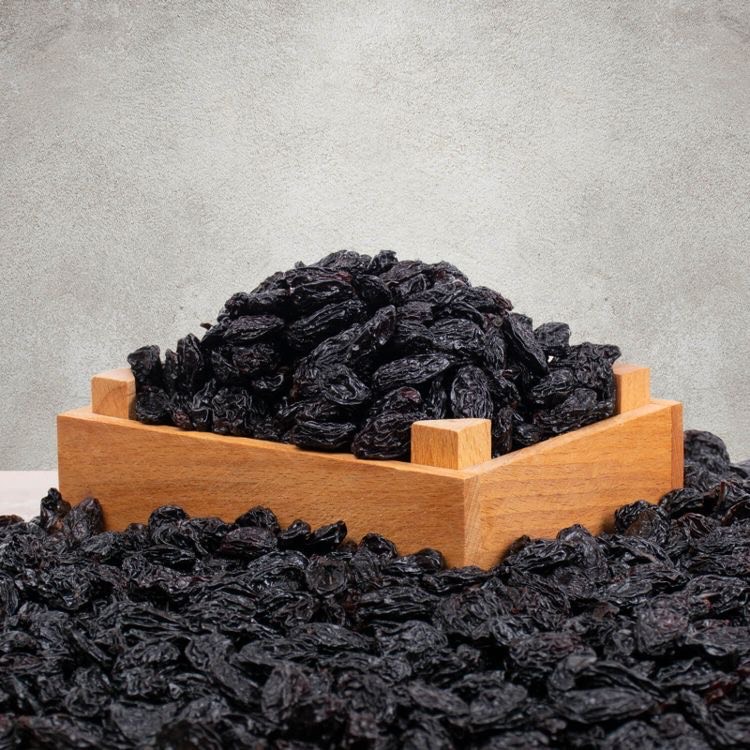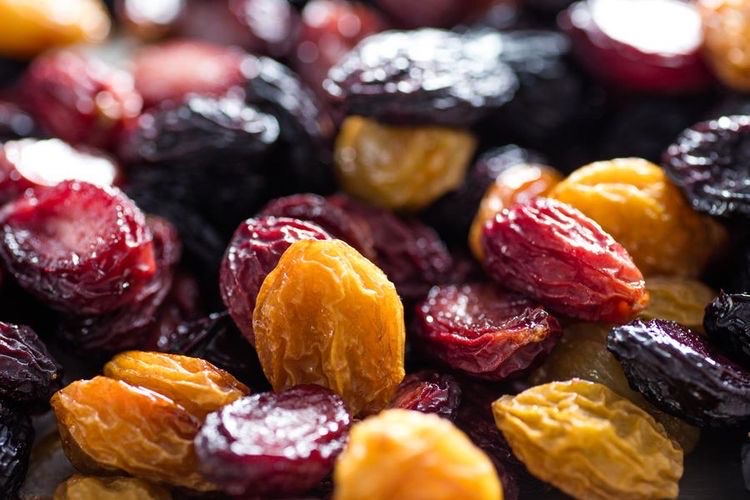Introduction
Raisins, those delectable dried fruits cherished in snacks, desserts, and dishes, undergo a fascinating transformation from grapes to their final form. This journey is guided by the intricate science of raisin production. From grape selection to drying techniques, this article will delve into the scientific processes that contribute to the creation of these flavorful and nutritious treats.
Click here and Take a look at our products.
Grape Selection and Cultivation
At the heart of raisin production lies the art and science of grape cultivation. The selection of grape varieties is crucial, with factors like seedlessness, thin skins, and high sugar content playing pivotal roles. These attributes contribute to the desired sweetness and texture of the final raisins. Moreover, vineyard management practices, such as pruning and pest control, are guided by scientific principles to ensure healthy grapevines and optimum fruit quality. you can read about choosing high quality raisins by clicking here.
Harvesting at the Right Time
Timing is everything in the world of raisin production. Grapes are left on the vine longer to allow sugar levels to rise, resulting in the desired sweetness of the raisins. As grapes ripen, their acidity decreases, which is essential for achieving a balanced flavor profile.
Drying Techniques
The transformation of grapes into raisins involves a carefully orchestrated drying process. Osmosis, a natural process driven by scientific principles, plays a central role. Water moves from areas of higher water concentration within the grape to the drier external environment. This gradual water removal concentrates sugars and flavors, enhancing the raisins’ taste. Additionally, sulfur dioxide treatment, a scientific preservation method, maintains the raisins’ color, texture, and overall quality.
We care about the drying process . you can KNOW ABOUT US more.
Chemical Changes and Flavor Development
During the drying process, a remarkable chemical reaction known as the Maillard reaction takes place. This reaction between amino acids and reducing sugars results in the distinctive brown color and complex flavor profile of raisins. As water evaporates, sugars become more concentrated in the raisins, elevating their sweetness and taste.
Quality Control and Storage
Science continues to guide the post-drying phase of raisin production. Optimal moisture content is determined using scientific methods to prevent spoilage and ensure an extended shelf life. Advanced packaging techniques, including vacuum sealing, further protect raisins from moisture and air, preserving their quality.
Nutritional Aspects
Raisins are not only flavorful but also nutrient-rich. The drying process retains many vitamins, minerals, and antioxidants present in grapes. However, it’s important to note that the drying process increases the glycemic index of raisins, affecting their impact on blood sugar levels.
The Role of Technology
Modern technology has also found its place in raisin production. From monitoring vineyard conditions using sensors to implementing controlled drying environments, technology enhances efficiency and quality throughout the process.
Environmental Impact
The science of raisin production also extends to sustainability. Addressing water usage, waste management, and energy efficiency are essential aspects of responsible raisin farming that align with environmental considerations.
Raisins in Culinary Creations
Beyond snacking, raisins bring their distinct flavor and texture to a wide array of culinary creations. Their versatility makes them a valuable ingredient in both sweet and savory dishes, adding depth and complexity to various recipes.
Health Benefits of Raisins
Raisins aren’t just tasty; they also offer health benefits. Packed with fiber, antioxidants, and nutrients like iron and potassium, they contribute to a well-balanced diet. Their natural sweetness makes them a healthier alternative to refined sugar in recipes.
Common Myths about Raisins
Dispelling myths is essential in understanding raisins better. Addressing misconceptions about sugar content, calories, and their impact on dental health provides a clearer picture of their nutritional value.
Raisins in Different Cultures
Raisins have transcended borders and cultures, becoming an integral part of various cuisines. From Indian biryanis to Mediterranean stews, their unique flavor adds depth to traditional dishes around the world.
The science of raisin production is a harmonious blend of agricultural expertise, chemistry, and preservation techniques. From selecting the right grape varieties to employing drying methods that enhance flavor and longevity, every step is guided by scientific knowledge. This combination of art and science results in the delightful raisins enjoyed by people worldwide—a testament to the intricate process behind this beloved dried fruit.
How do grapes transform into raisins?
Grapes are dried through osmosis, where water is removed from the grape,
What is the Maillard reaction in raisin production?
The Maillard reaction is a chemical process that contributes to the brown color and complex flavor of raisins during drying.
Are raisins a healthy snack?
Yes, raisins offer vitamins, minerals, and antioxidants, making them a nutritious snack option.
How do raisins impact the environment?
Sustainable practices in raisin farming address water usage, waste management, and energy efficiency.
What are some culinary uses of raisins?
Raisins add flavor and texture to both sweet and savory dishes, enhancing various recipes.





